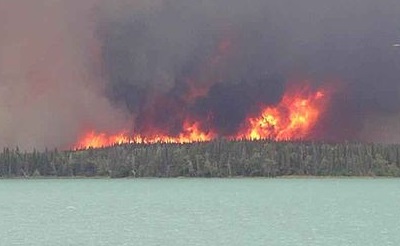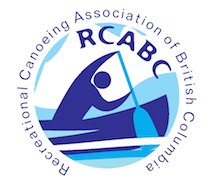
Wildfires in BC can have a profound impact on the landscape, wildlife, economy and our safety. Lightning can be risky when out canoeing and camping either directly or by causing wildfires in the area. Learning about lightning, campfire and wildfire safety is vital to understanding our environmental impact and safety.
FIRES, CAMPFIRES AND LIGHTNING TOPICS:
A high proportion of lightning injuries or deaths in BC and Canada occur while camping, hiking and boating. Lightning can be unpredictable, but the following precautions are currently recommended by most first aid and safety organizations:
- Check weather reports to anticipate storms
- Don’t try to outrun a storm
- Get off and away from the water – it is a good conductor. Some guides take clients off the water when there is less than 20 seconds between lightning and thunder. The sound (thunder) travels about 3km per second.
- Spread out your group
- Seek shelter:
- In dry, low lying areas
- In a stand of small trees, away from taller trees
- Away from metal such as fences and power lines
- In a closed building or vehicle
- Stay low to the ground crouching on your PFD, camping pad or any other insulator
British Columbia has had some tough forest fire years. This is an excerpt from the BC Wildfire website. “The 2003 fire season was one of the most catastrophic in British Columbia's recorded history. Due to an extended drought in the southern half of the province, forest firefighters faced conditions never seen before in Canada..… nearly 2,500 fires involving more than 10,000 firefighters and support personnel and burning more than 265,000 hectares (ha) at a cost of $375 million.”
Roughly half of wildfires in BC are caused by human activity. Camp stoves and camp fires are major contributors to wildfires. Climate change is forcast to make things worse. Most people understand the allure of the campfire, as if it is genetically imprinted into us, but please consider that campfires can have impacts beyond wild fires.
- Repeated wood collection in areas can impact habitat and scenery
- Campfires can scar the vegetation and soil if the site isn’t selected properly
- People in your group or neighbouring groups may have allergies or asthma triggered by smoke collecting in still conditions.
If you choose to build a fire in the wilderness please follow Leave No Trace guidelines. The BC Government has a wild fire management branch with information on current fire conditions and restrictions for all the districts in BC, and this brochure on Stoves and Campfires.
Also, check for fire restrictions at www.bcwildfire.ca
New in 2010, BC regulations state that a campfire can only be 0.5 metre wide by 0.5 metre high, there must be a fireguard of about 1.0 metre around the fire, and hand tool such as a shovel must be nearby, or at least 8 litres of water. Fines for breaking fire regulations are $345 and damage to crown land through recklessness can be up to $1 million or up to 3 years in prison.



















